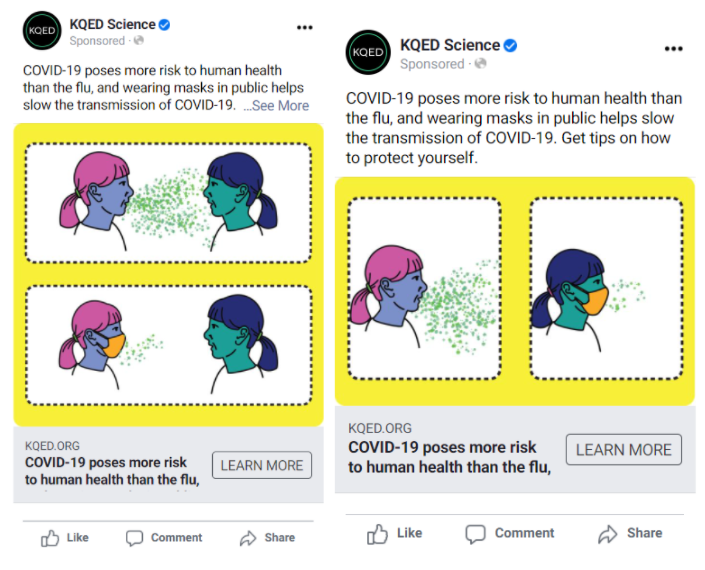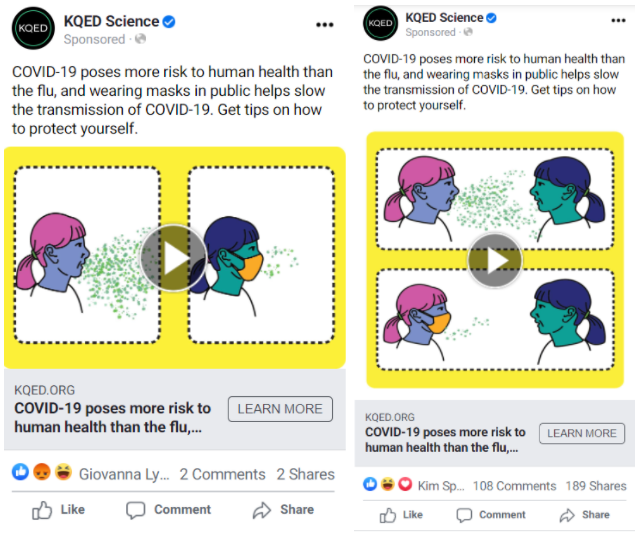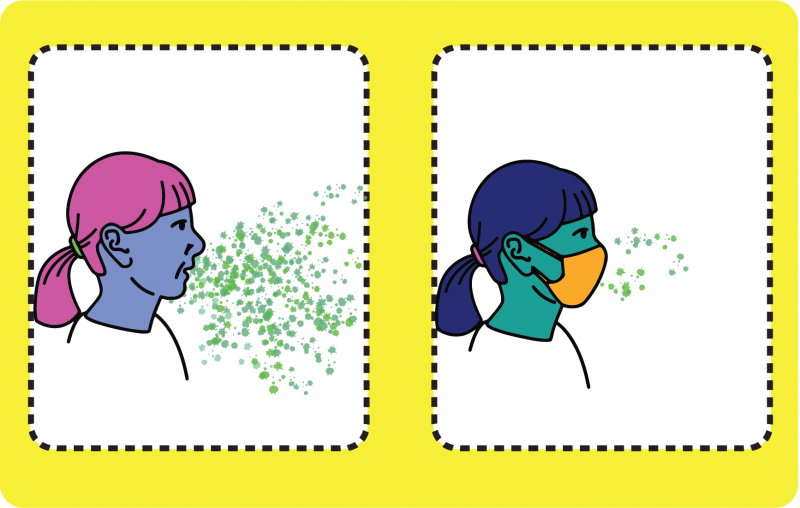Background and Overview
Mask-wearing for the prevention of COVID-19 became very political very quickly, especially during the earlier months of the pandemic. In addition to the massive amount of misinformation being spread via Twitter about masks and many other topics, it’s not surprising that communicating the importance of masks became a challenge for science communicators around the world.
Science communication became very vital in the fight against this pandemic and motivated researchers at Eckerd College and Texas Tech University to understand people’s perception of masks through consensus messaging, which is essentially telling people that scientists are generally in agreement that something is true, and informative images, or, “infographics.” In summary, the results of the study found that:
- Presenting participants with a consensus message such as “There is strong scientific consensus that COVID-10 poses significantly more risk to human health than the flu …” did not significantly influence their beliefs.
- The presence of an infographic depicting how masks help to prevent the spread of COVID-19 did, in some circumstances, influence participants’ beliefs.
- Political party affiliation was the strongest predictor of participants’ beliefs about COVID-19 risks, mask-wearing, and policy support.
For more about that study, read along here.
Facebook Testing
Related to this research and communicating the importance of mask-wearing to the public, our KQED Science Engagement team set out to test different formats of media with the same mask message used in the survey conducted by Texas Tech University. We were interested in learning which images -- videos, graphics or GIFs -- worked best in our Facebook posts to inform our future Facebook content creation strategies. We did this with the help of our digital marketing consultants, DeltaV Digital. DeltaV Digital worked with us to strategize, execute, and share findings for this Facebook test.
Methods
Our target audience included men and women age 18-65+ in the U.S.
We used three different formats for our mask-wearing audience to test: video, images and GIFs. Below are screenshots of the different media formats:
Images:

GIFs:

Videos:

Learnings & Findings
Across all target audiences, the engagement rate for the videos performed best above all other formats followed by GIFs, and then images. As age increased, engagement for all the media formats increased as well. This is not surprising as the most engaged audiences on our KQED Science Facebook page tend to fall within the older demographics, ages 55-65+. In the comments section of these posts, men were more insulting and severe in their opinions, and women tended to share more data, charts and sources, backing their opinions with evidence.
In general, DeltaV Digital found that older women were the highest among the groups to engage, react, and view the landing page than any other demographic group.
These are a few of the recommendations they had presented to us:
- Using sound-off media works as well as (or even better) across all target audiences.
- Videos are very effective tools for engagement purposes. However, keep in mind that Facebook is a sound-off environment, using more text in Facebook videos will improve overall engagement in the future.
- Images don’t perform as well as the GIF and videos in this experiment.
For more information, please review the presentation prepared by DeltaV Digital:
